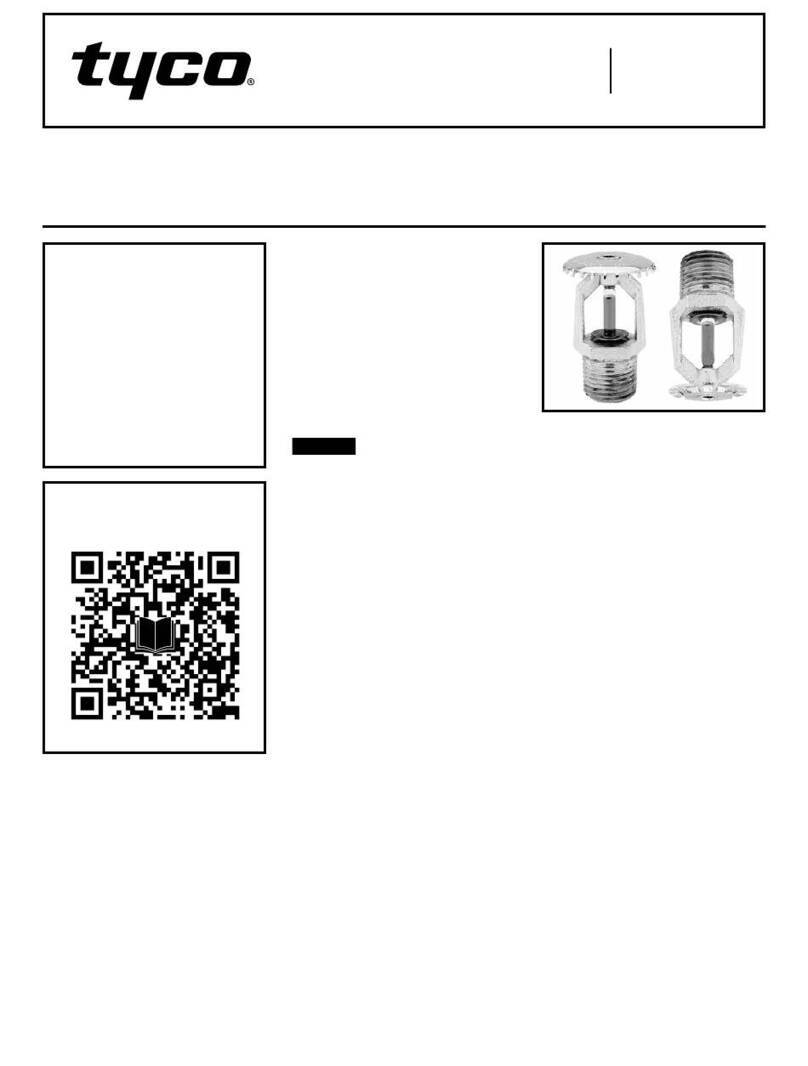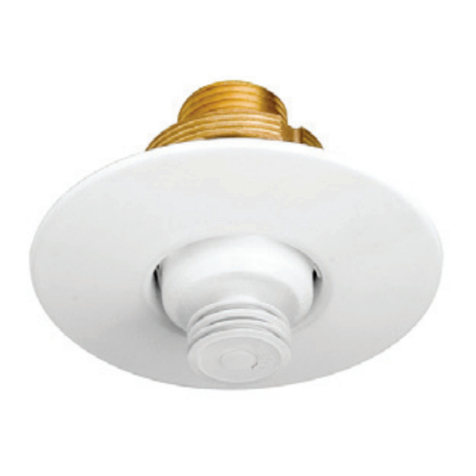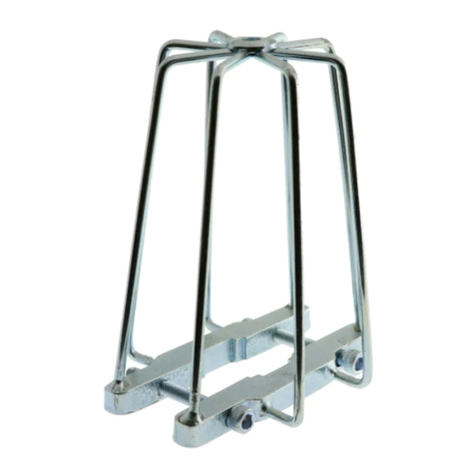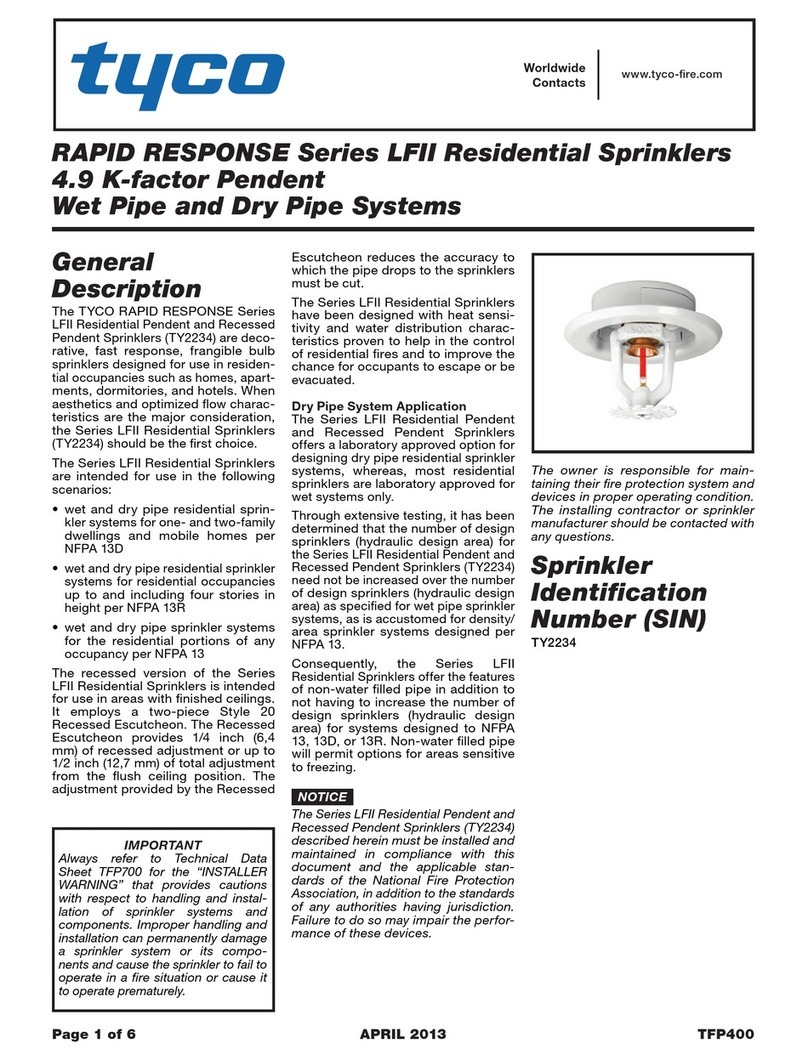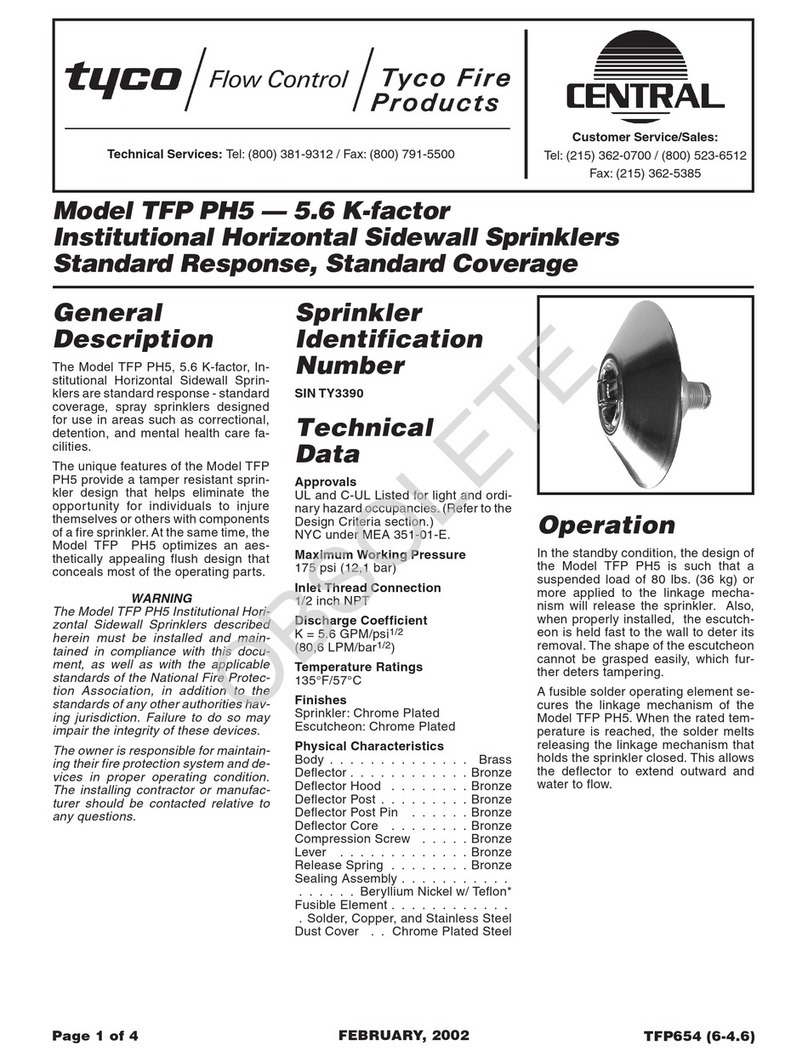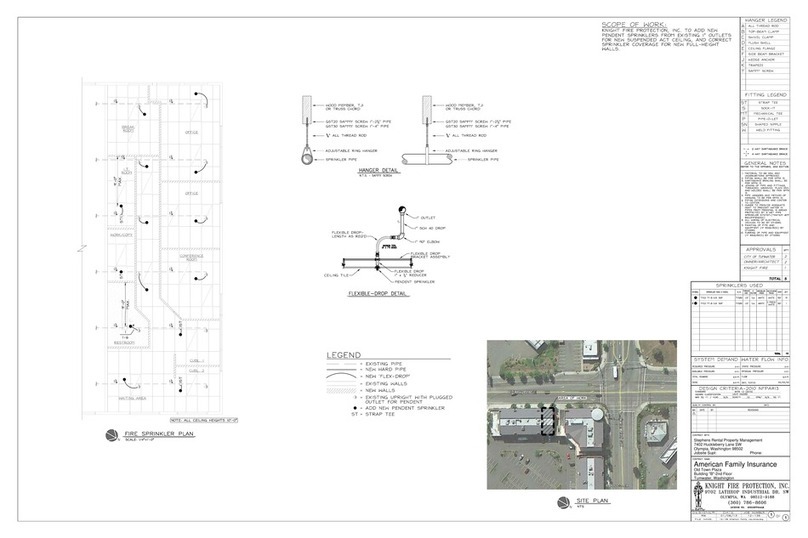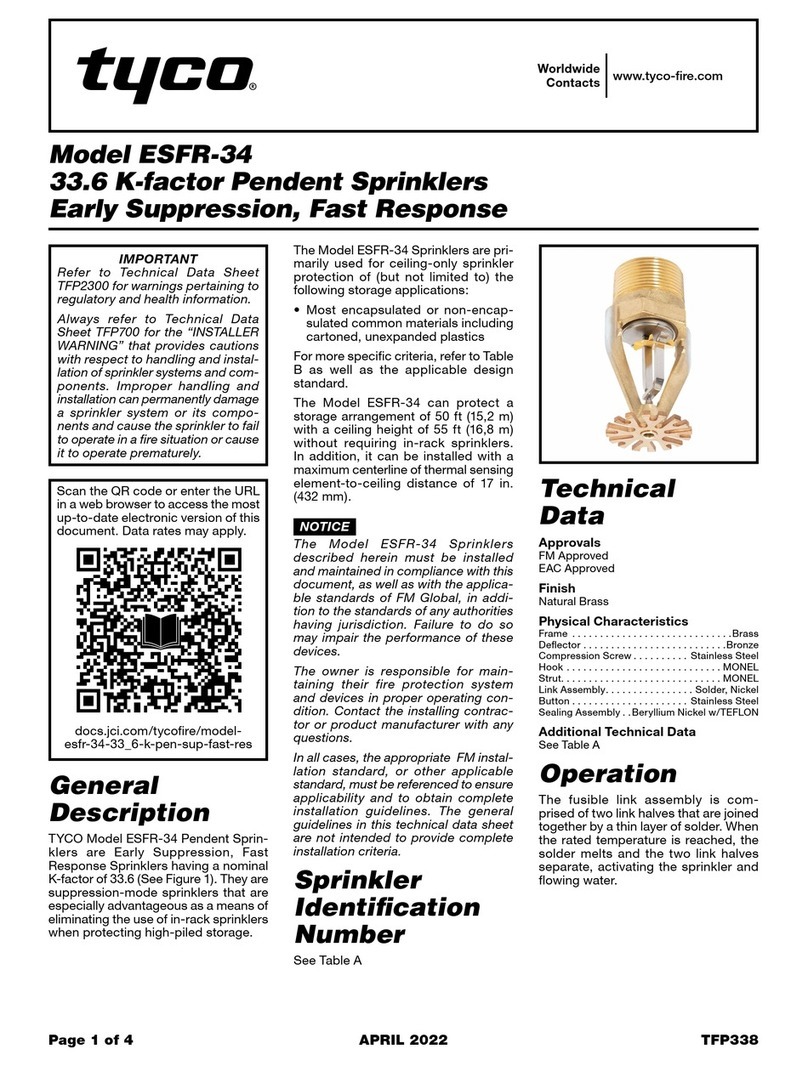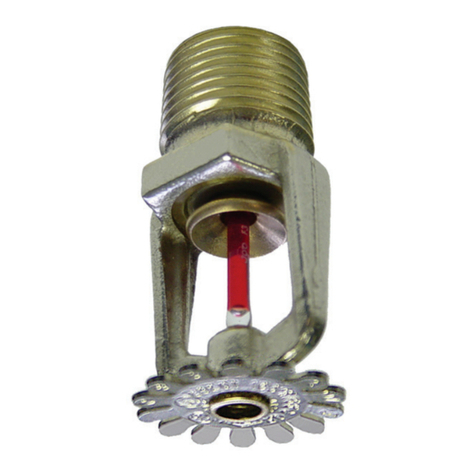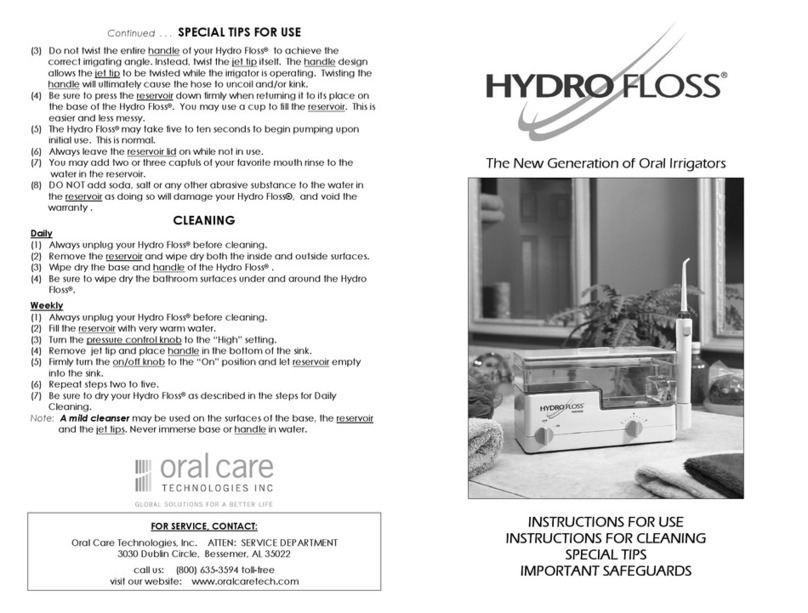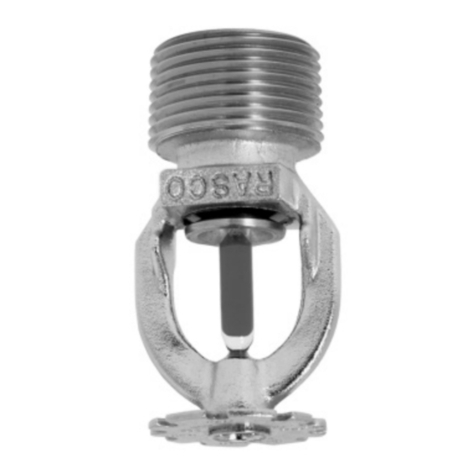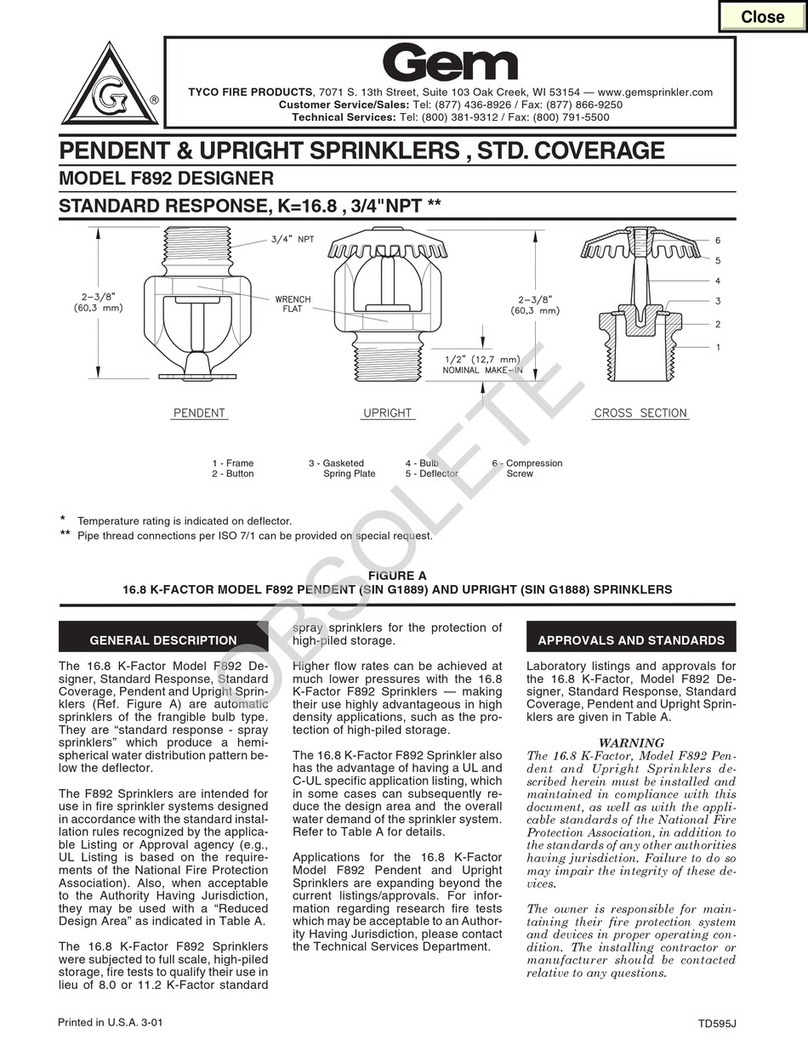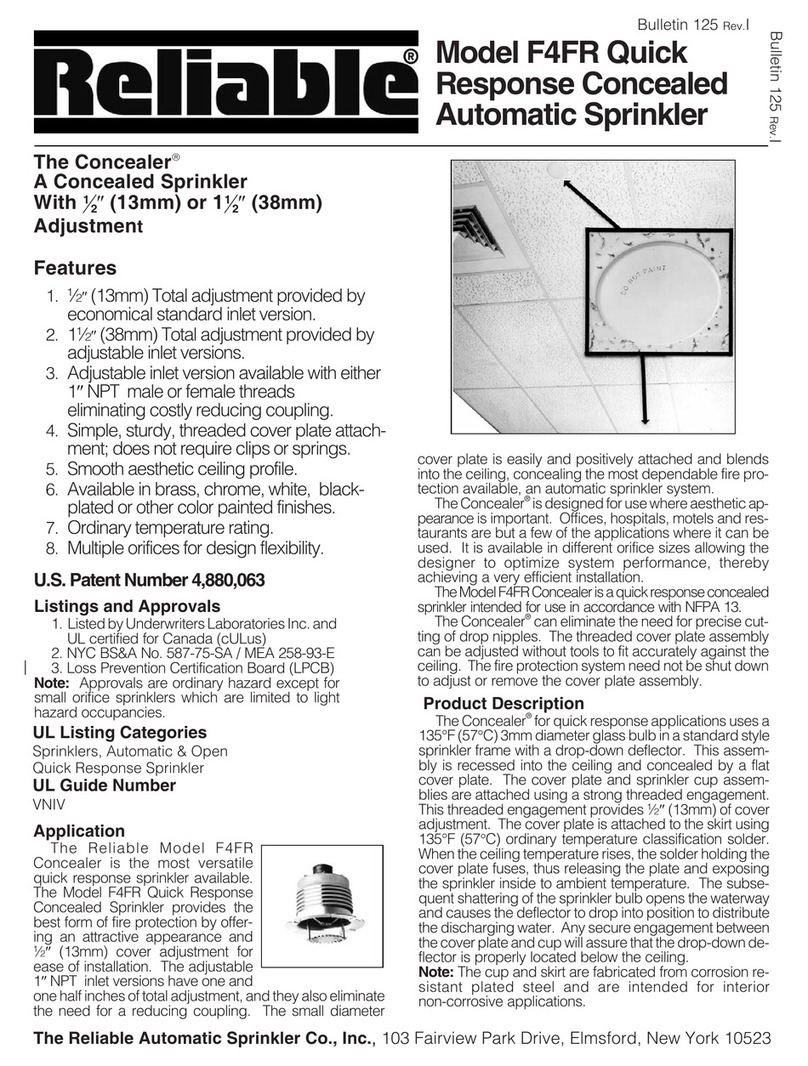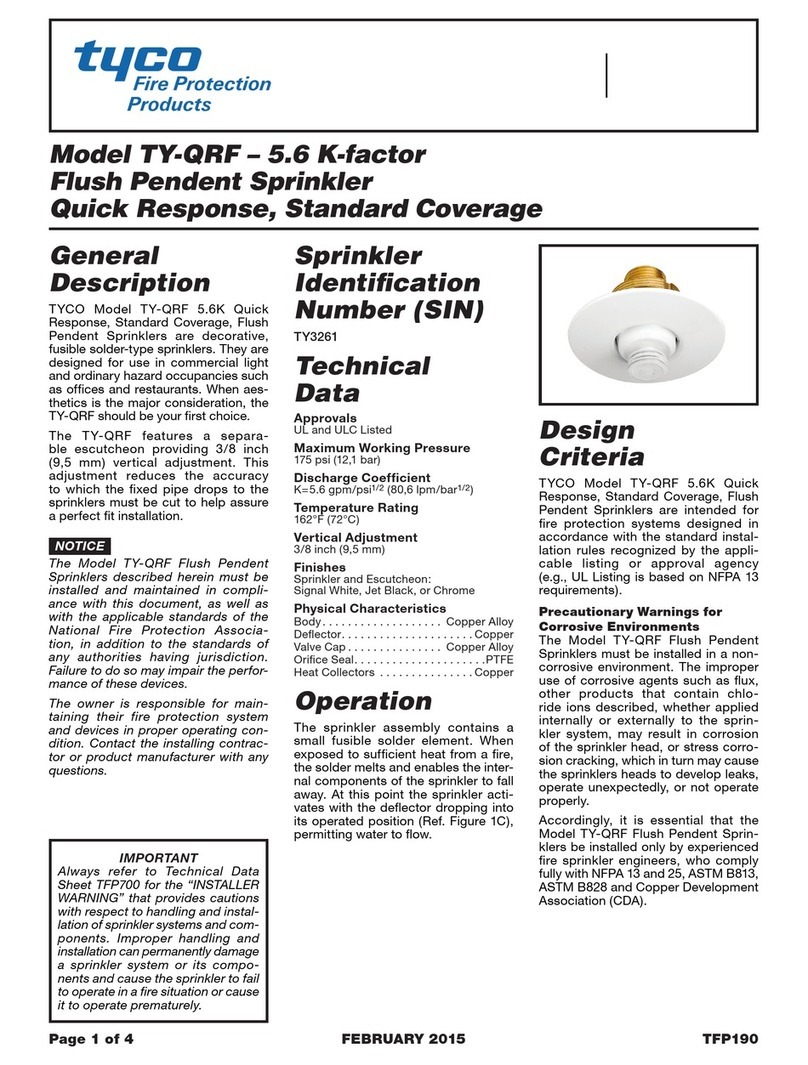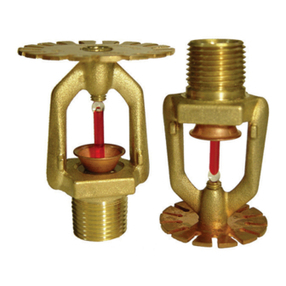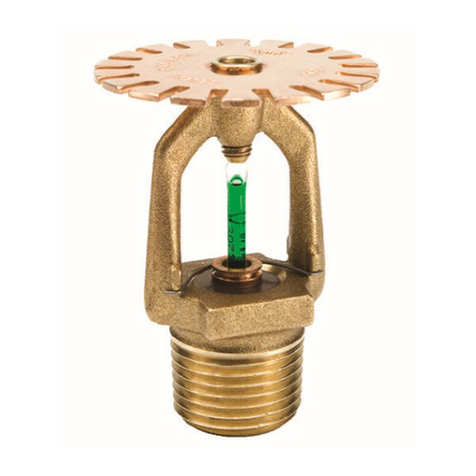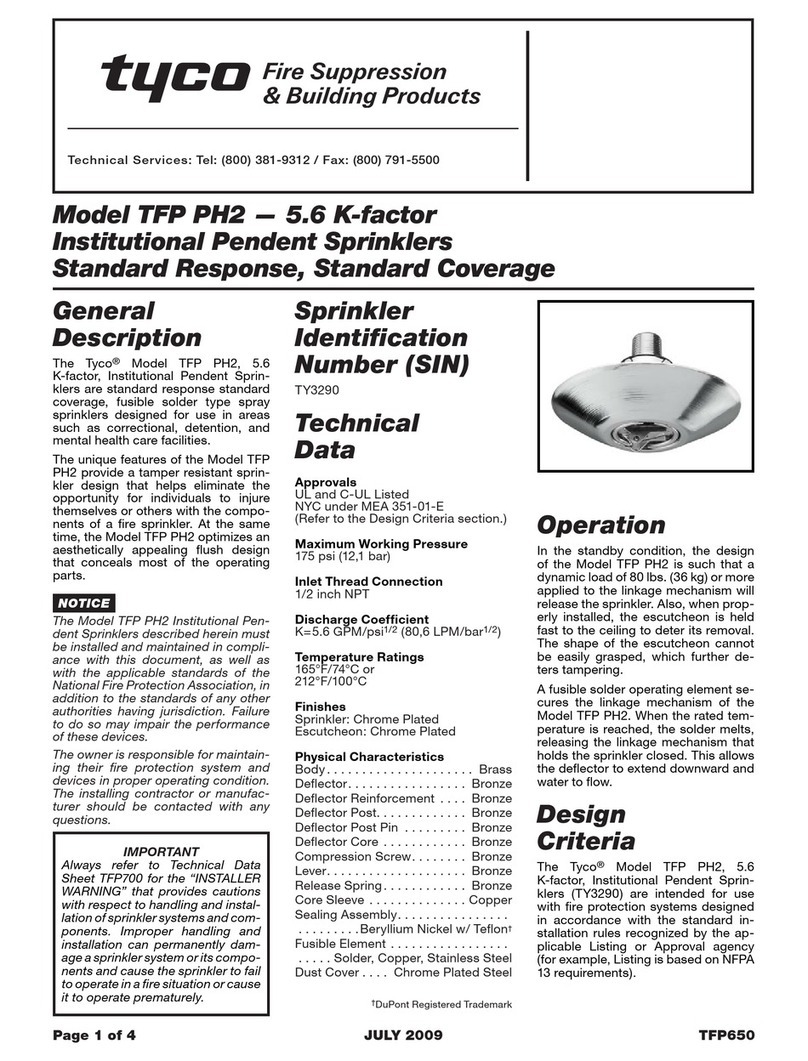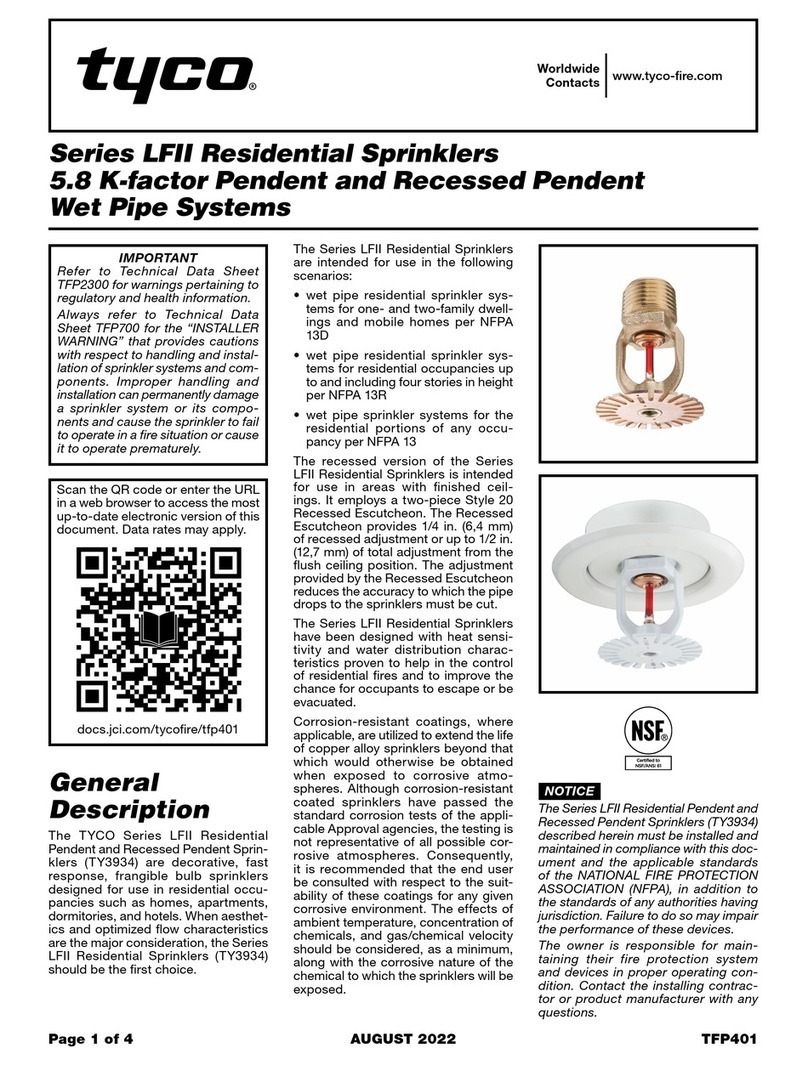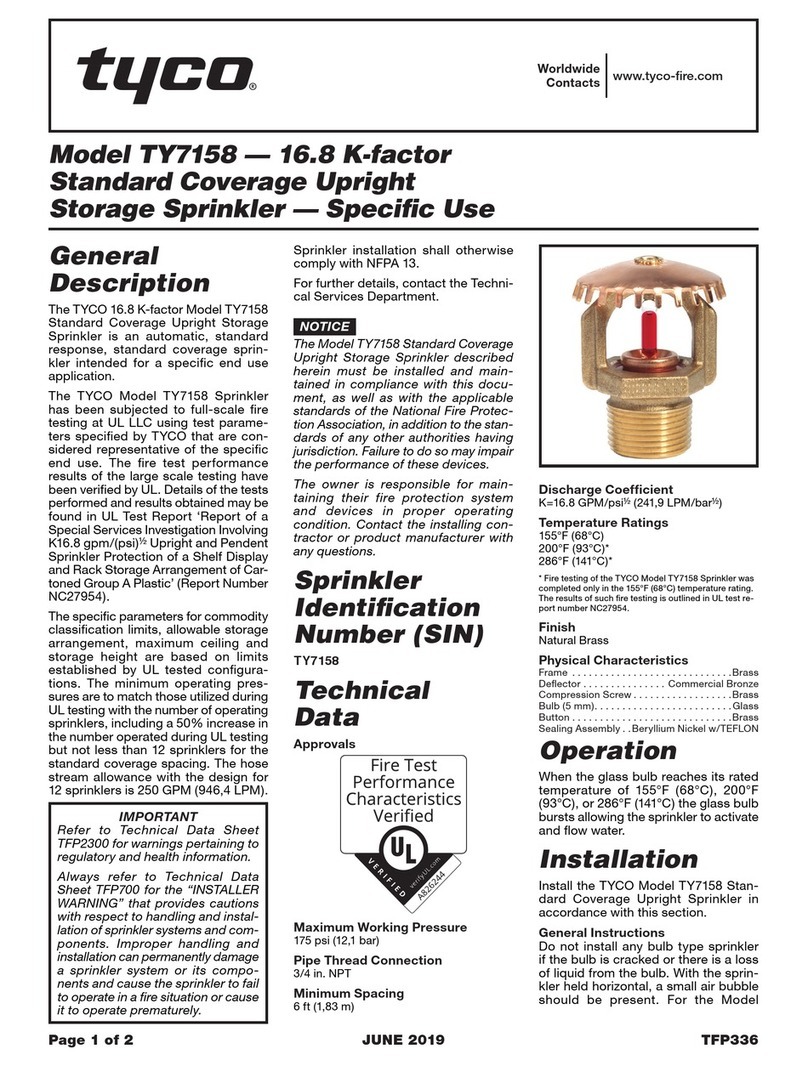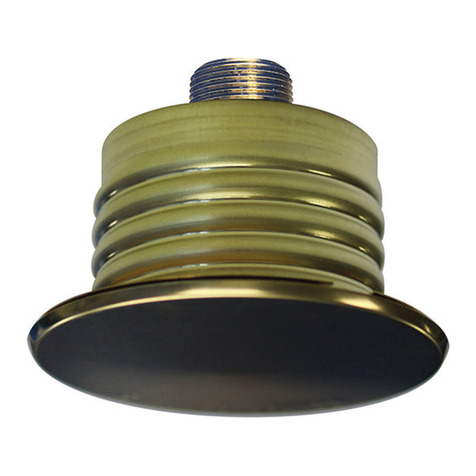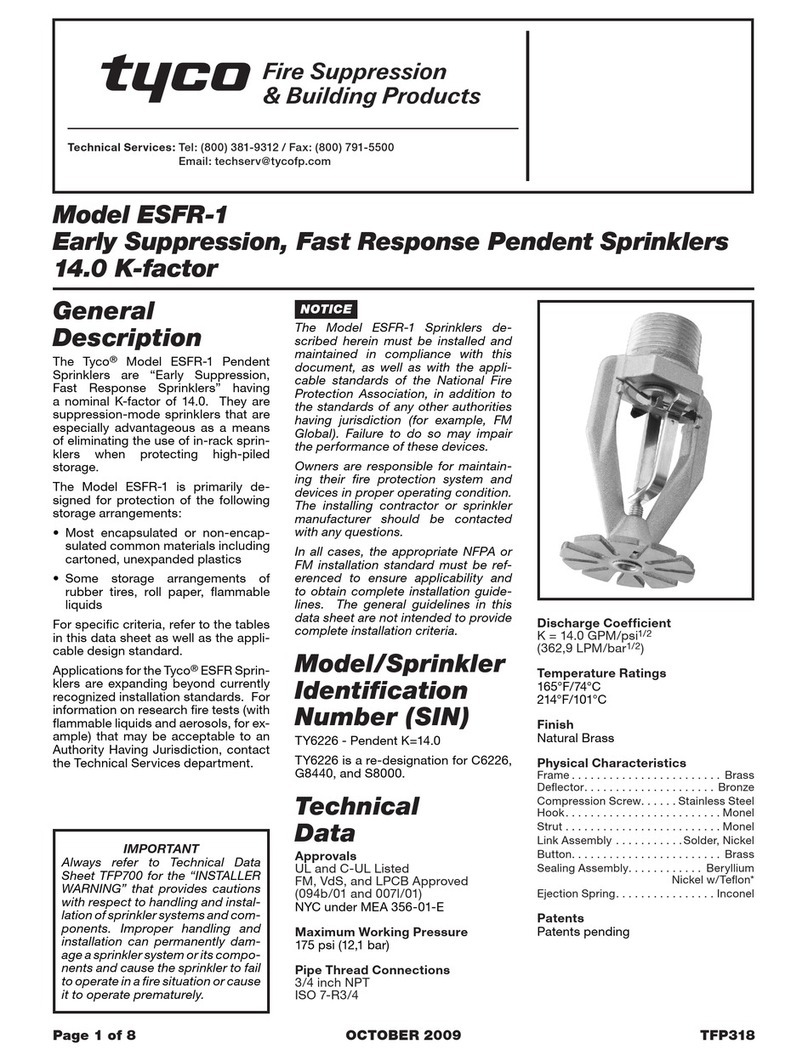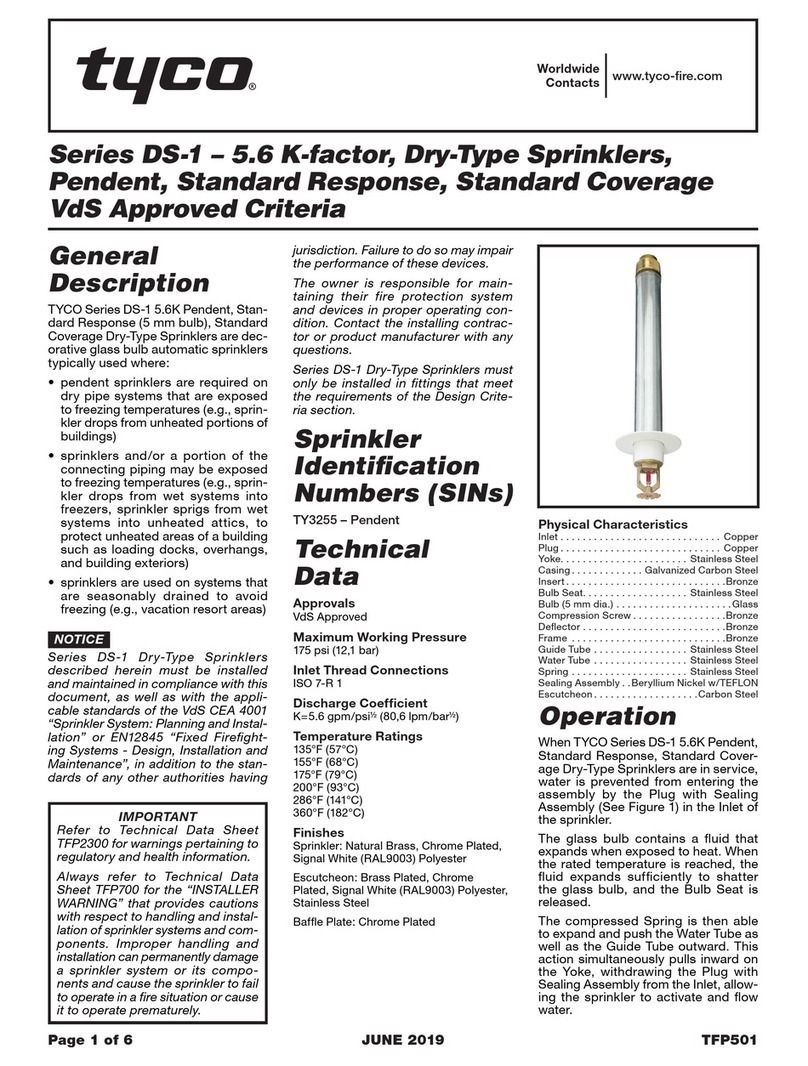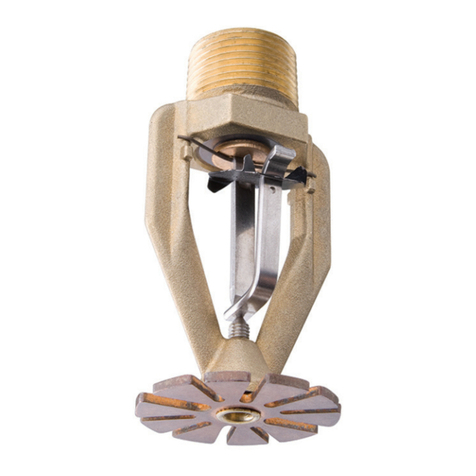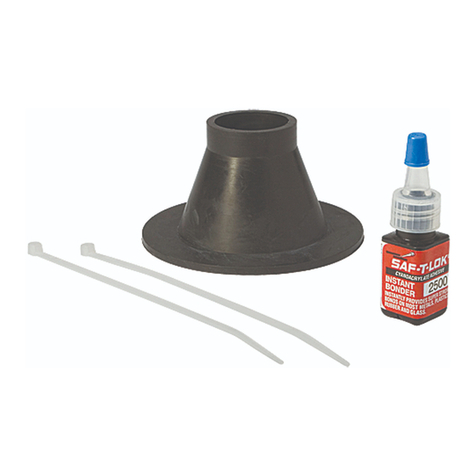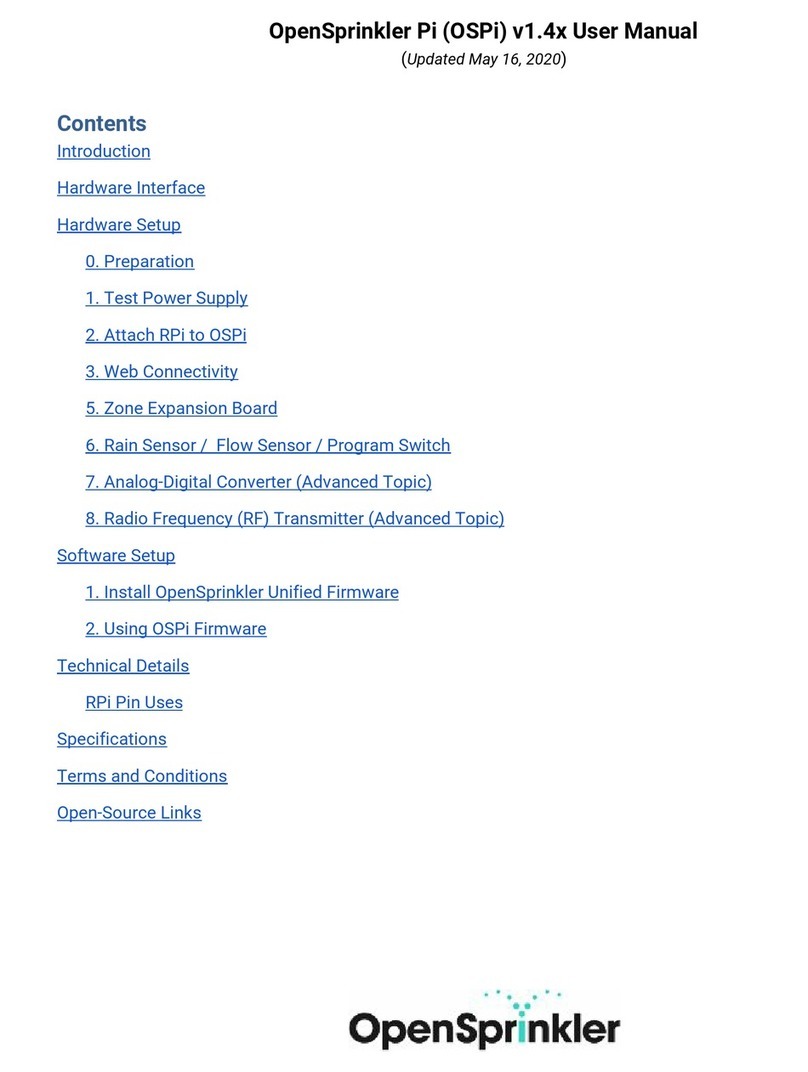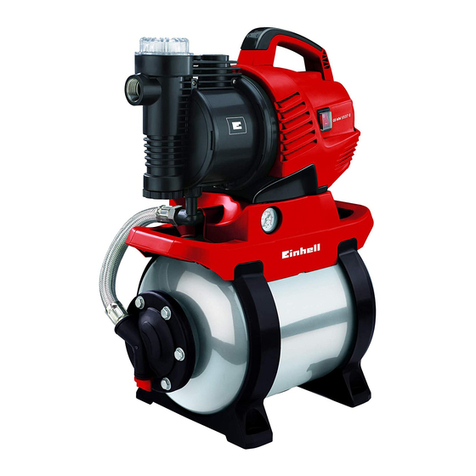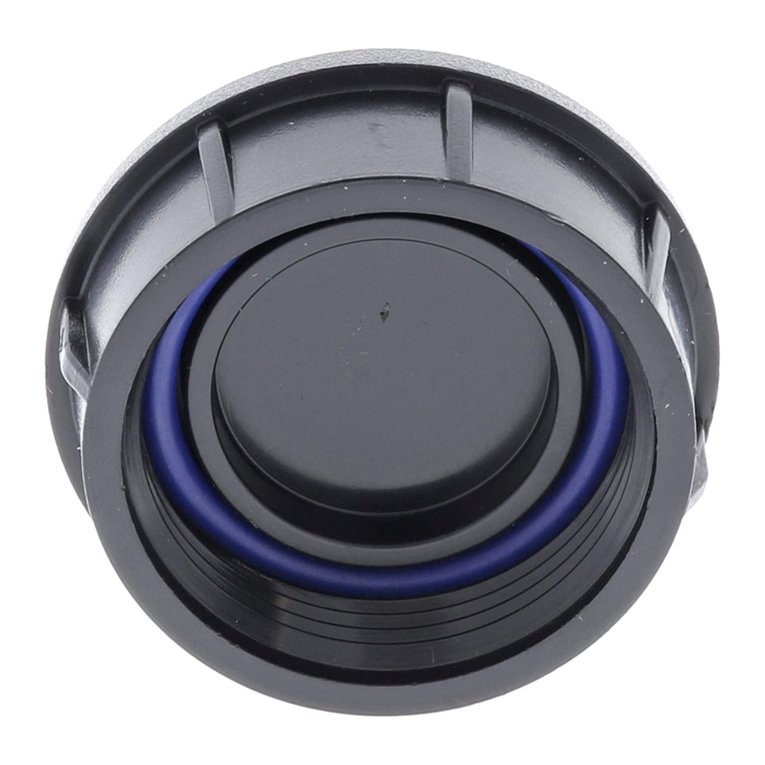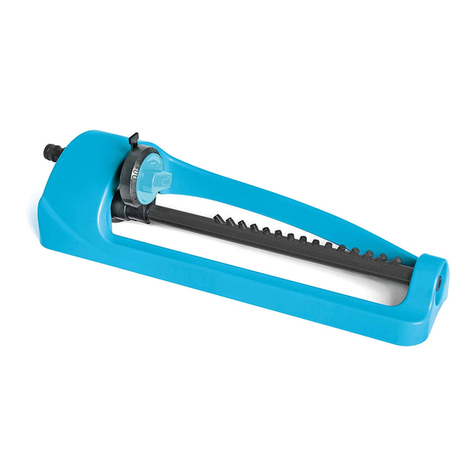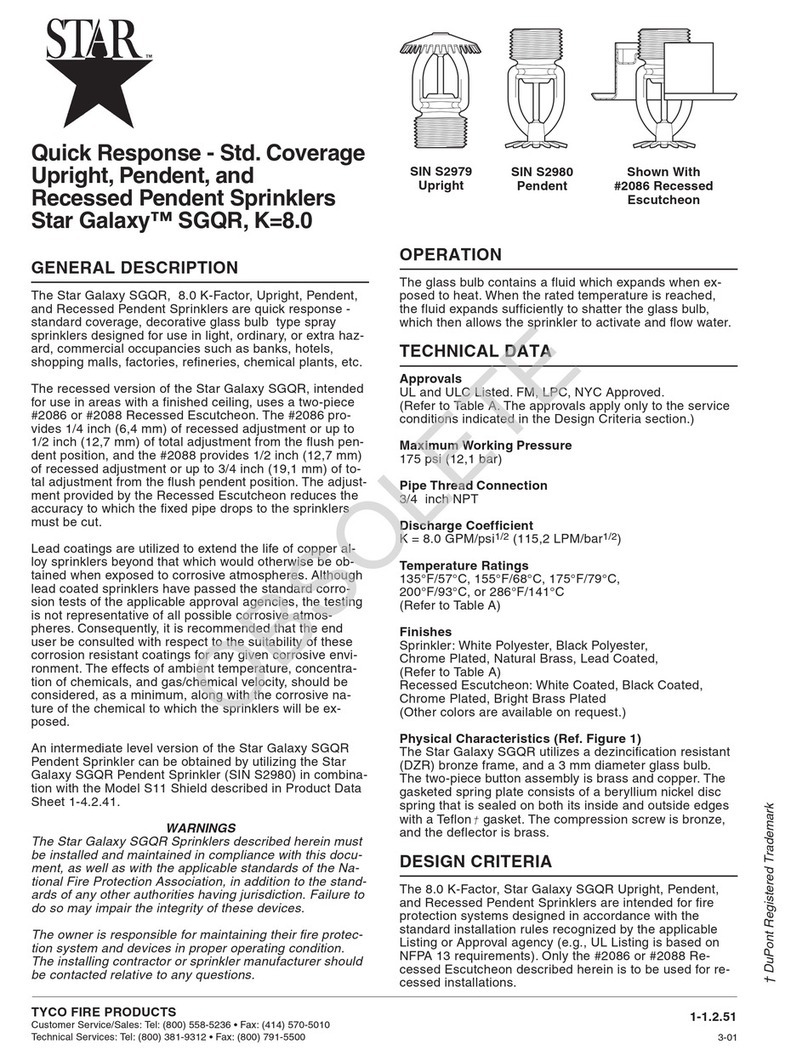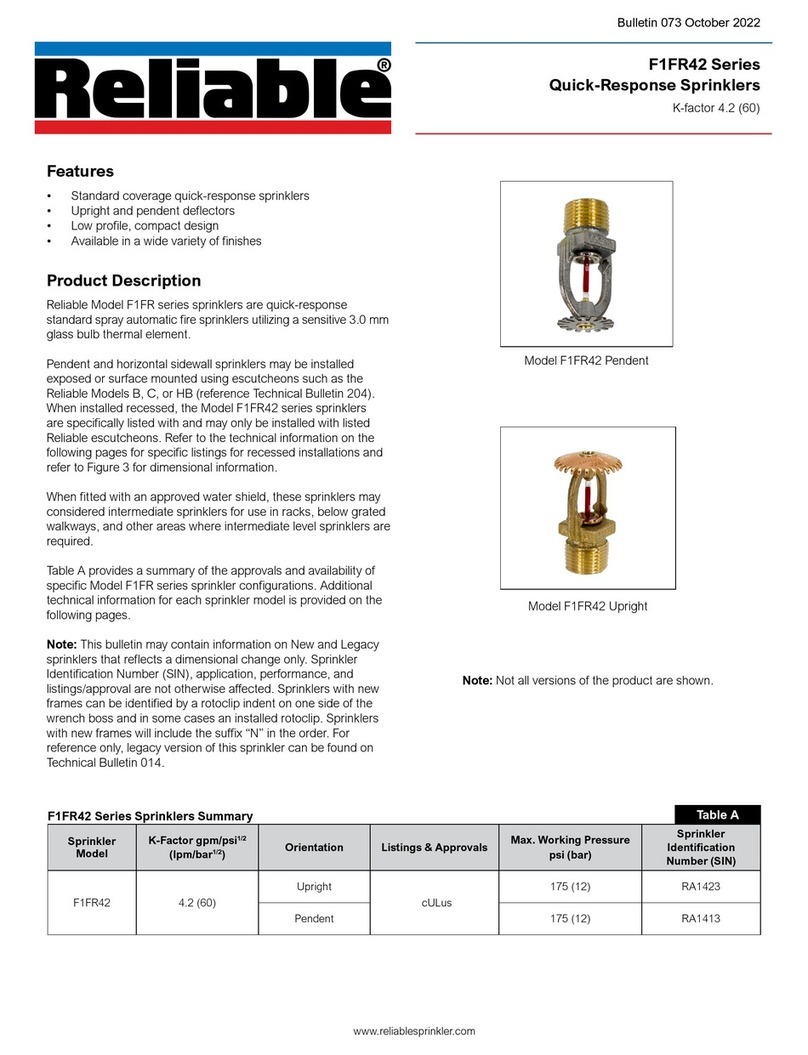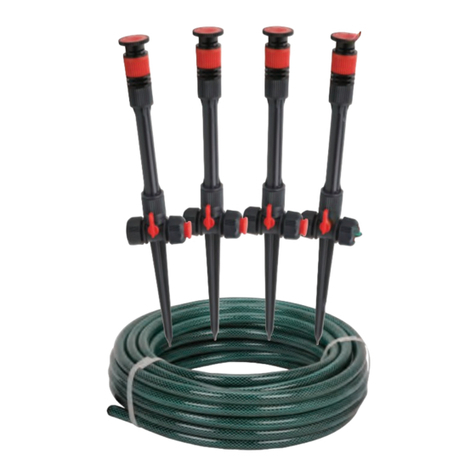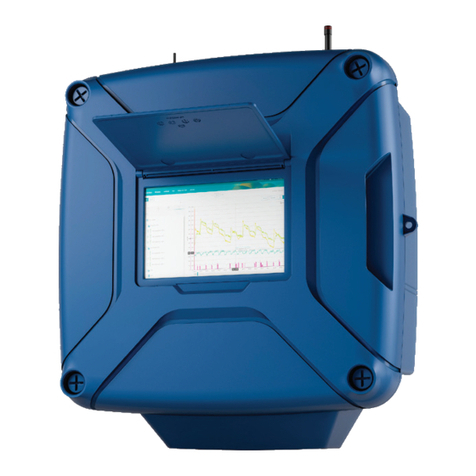
TFP410
Page 9 of 10
Installation
The TYCO RAPID RESPONSE
Series LFII Residential Horizontal
and Recessed Horizontal Sidewall
Sprinklers (TY1334) must be installed
in accordance with this section:
General Instructions
Do not install any bulb type sprinkler if
the bulb is cracked or there is a loss of
liquid from the bulb. With the sprinkler
held horizontally, a small air bubble
should be present. The diameter of the
air bubble is approximately 1/16 inch
(1,6 mm).
A leak-tight 1/2 inch NPT sprinkler
joint should be obtained by applying a
minimum to maximum torque of 7 to 14
ft. lbs. (9,5 to 19,0 Nm). Higher levels
of torque can distort the sprinkler Inlet
with consequent leakage or impairment
of the sprinkler.
Do not attempt to compensate
for insufcient adjustment in an
Escutcheon Plate by under- or over-
tightening the Sprinkler. Re-adjust the
position of the sprinkler tting to suit.
Series LFII Residential Horizontal
Sidewall Sprinklers
The Series LFII Residential Horizontal
Sidewall Sprinklers must be installed
in accordance with the following
instructions.
Step 1. Install horizontal sidewall sprin-
klers in the horizontal position with their
centerline of waterway perpendicular to
the backwall and parallel to the ceiling.
The word “TOP” on the Deector is to
face towards the ceiling with the front
edge of the Deector parallel to the
ceiling.
Step 2. With pipe-thread sealant
applied to the pipe threads, hand-
tighten the sprinkler into the sprinkler
tting.
Step 3. Tighten the sprinkler into the
sprinkler tting using only the W-Type
6 Sprinkler Wrench (Figure 3). With
reference to Figure 1, apply the W-Type
6 Sprinkler Wrench to the wrench ats.
Series LFII Residential Recessed
Horizontal Sidewall Sprinklers
The Series LFII Residential Recessed
Horizontal Sidewall Sprinklers must
be installed in accordance with the
following instructions.
Step A. Install recessed hori-
zontal sidewall sprinklers in the hori-
zontal position with their centerline
of waterway perpendicular to the
backwall and parallel to the ceiling. The
word “TOP” on the Deector is to face
towards the ceiling.
Step B. After installing the Style 20
Mounting Plate over the sprinkler
threads and with pipe-thread sealant
applied to the pipe threads, hand-
tighten the sprinkler into the sprinkler
tting.
Step C. Tighten the sprinkler into the
sprinkler tting using only the W-Type
7 Recessed Sprinkler Wrench (Figure
4). With reference to Figure 1, apply the
W-Type 7 Recessed Sprinkler Wrench
to the sprinkler wrench ats.
Step D. After the ceiling has been
installed or the nish coat has been
applied, slide on the Style 20 Closure
over the Series LFII Residential
Sprinkler and push the Closure over the
Mounting Plate until its ange comes in
contact with the wall.
Care and
Maintenance
The TYCO RAPID RESPONSE
Series LFII Residential Horizontal
and Recessed Horizontal Sidewall
Sprinklers (TY1334) must be maintained
and serviced in accordance with this
section:
Before closing a re protection system
main control valve for maintenance
work on the re protection system
that it controls, obtain permission to
shut down the affected re protection
systems from the proper authorities
and notify all personnel who may be
affected by this action.
Absence of the outer piece of an
escutcheon, which is used to cover
a clearance hole, can delay sprinkler
operation in a re situation.
The owner must assure that the sprin-
klers are not used for hanging any
objects and that the sprinklers are only
cleaned by means of gently dusting
with a feather duster; otherwise, non-
operation in the event of a re or inad-
vertent operation may result.
Sprinklers which are found to be
leaking or exhibiting visible signs of
corrosion must be replaced.
Automatic sprinklers must never be
painted, plated, coated, or otherwise
altered after leaving the factory.
Modied sprinklers must be replaced.
Sprinklers that have been exposed to
corrosive products of combustion, but
have not operated, should be replaced
if they cannot be completely cleaned
by wiping the sprinkler with a cloth or
by brushing it with a soft bristle brush.
Care must be exercised to avoid
damage to the sprinklers - before,
during, and after installation. Sprinklers
damaged by dropping, striking, wrench
twist/slippage, or the like, must be
replaced. Also, replace any sprinkler
that has a cracked bulb or that has lost
liquid from its bulb. (Ref. Installation
Section.)
The owner is responsible for the
inspection, testing, and maintenance of
their re protection system and devices
in compliance with this document, as
well as with the applicable standards of
the National Fire Protection Association
(e.g., NFPA 25), in addition to the
standards of any authorities having
jurisdiction. Contact the installing
contractor or sprinkler manufacturer
regarding any questions.
Automatic sprinkler systems are recom-
mended to be inspected, tested, and
maintained by a qualied Inspection
Service in accordance with local
requirements and/or national codes.
